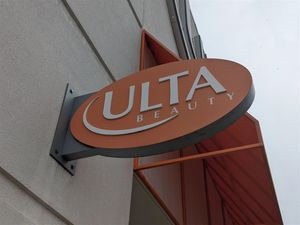Healthcare Costs to Increase at Rates Up to Three Times Overall Consumer Price Index (CPI) Levels
Segal, a leading benefits and HR consulting firm, today issued the 2026 Segal Health Plan Cost Trend Survey. The 29th annual report reveals GLP-1 medications, provider price inflation, increases in high-cost oncology treatments and record utilization of mental health services as the main drivers of rising healthcare costs for 2026.
The survey of health, prescription, dental, and vision plans represents over 80% of the commercially insured and self-insured market and uncovers the following:
1. GLP-1s drive prescription cost hikes, posing a challenge to plans
- GLP-1 medications are a top driver in the projected 11% increase in prescription drug costs.
- 60% of Segal’s client plans offer anti-obesity medication (AOM) coverage in part due to 40% of people under 65 meeting the criteria for obesity.
- Some plans are evaluating if they should cover AOMs, and how to optimize coverage, such as re-evaluating eligibility to manage costs while prioritizing those most in need. There are a variety of ways for plans to address concerns over covering weight-loss drugs.
“Soaring prescription costs are mostly driven by the preference for expensive GLP-1 medications over cheaper alternatives and lifestyle changes. That creates an expensive challenge for health plans. At the same time, drug manufacturers continue to saturate the market with new high-cost specialty products so costs aren’t coming down anytime soon,” said Edward Kaplan, the National Health Practice Leader and Senior Vice President at Segal.
2. Providers are negotiating significantly higher prices
- Hospital stays, surgical procedures, and physician services have been drastically increasing in cost. The high demand for care and limited supply of providers has increased the leverage that providers have to secure higher reimbursement rates.
- Medical plan cost trends are projected to increase by a median of 9%, marking the highest annual projection in more than a decade.
- Hospitals’ price inflation is expected to rise by 5%, and physicians’ price inflation is expected to rise by 2.1%.
“The cost of healthcare is reaching its breaking point. It is becoming more complicated to manage costs, but there is still hope for utilizing strategic practices to control your plan’s costs,” said Eileen Flick, Leader of Healthcare Informatics and Senior Vice President at Segal.
3. Mental health service usage reaches an all-time high, surpassing COVID era
- Increased utilization of services for mental health conditions is the largest contributor to healthcare costs.
- Americans are using mental health services more than they were in 2019: 22% vs. 30% in 2024.
- 37% of Gen Alpha, the largest share of any generation, see a mental health provider. They are increasingly seeing providers for ADHD and autism treatment, in addition to anxiety and depression.
“There’s a sizeable increase in Americans using mental health services, and this has only continued to increase post-COVID. This includes a recent rise in treatment for autism, which is attributed to improved diagnostic criteria, greater awareness, enhanced insurance coverage, and increased provider availability,” said Eric Miller, Vice President and Consulting Actuary at Segal.
Best Practices to Mitigate Rising Healthcare Costs
Segal’s approach is to understand each plan’s unique goals, budget, and timing, and make tailored recommendations to best align with the organization’s needs. But there are cost-management strategies that many plans can utilize to address rising costs without compromising care, including:
- Implement drug plan design strategies. Prescription drug costs can be controlled by adopting a custom drug formulary that prioritizes the less expensive options such as biosimilars and generics. Institute pharmaceutical benefit manager (PBM) auditing and copayment maximization to help with managing drug costs.
- Take advantage of technology. Use the latest technologies to detect fraud such as duplicate claims or a wave of similar claims generated by the same provider. Technology can also help streamline claims processing. Consider implementing a telehealth program as a more affordable way to manage common health issues, such as behavioral health, diabetes, hypertension, and obesity. Also, Segal has seen success with using AI to enhance participant communications.
- Shop in-network. Plans are shifting away from point solutions towards hard dollar savings within their network. Explore ways to optimize utilization to high quality and lower cost providers, direct contract with key providers, or explore risk-sharing.
- Demand network risk-sharing performance guarantees: During request for proposals (RFPs) or contract renewal insist that your medical network provider put a portion of their fees at risk for meeting target cost, utilization or clinical goals.
- Offer on-site clinics. A worksite health center can direct care to the right specialists, point solution programs and centers of excellence. A well-operated clinic reduces ER, urgent care and specialist visits. As the clinic matures, the ROI increases.
Additional cost-management strategies are available in the 2026 Segal Health Plan Cost Trend Survey report.
About the Segal Health Plan Cost Trend Survey
Recognized as one of the most definitive surveys on employer-sponsored health plans, the Segal survey is now in its 29th year. The survey provides industry-leading guidance on how plan sponsors can alleviate the stress of health costs. Participants include health insurers, managed care organizations (MCOs), pharmacy benefit managers (PBMs) and third-party administrators (TPAs). Survey respondents represent about 80 percent of the commercially insured and self-insured market. Respondents shared their trend forecasts for medical, prescription drug, dental and vision coverage and actual health cost trends based on their group health plan experience. This survey is for informational purposes only and does not constitute consulting, legal, tax or investment advice. Readers are encouraged to discuss the issues raised in the survey with their own legal, tax and other advisors before taking or refraining from taking any actions.
About Segal
Segal delivers trusted advice that improves lives. Segal is a privately owned benefits, human capital, communications, technology, insurance brokerage and investment consulting firm with more than 1,000 employees throughout the U.S. and Canada. Segal, Segal Marco Advisors and Segal Benz are all members of the Segal family.
View source version on businesswire.com: https://www.businesswire.com/news/home/20250909869556/en/






